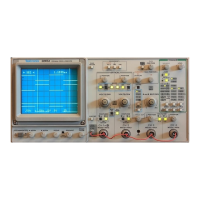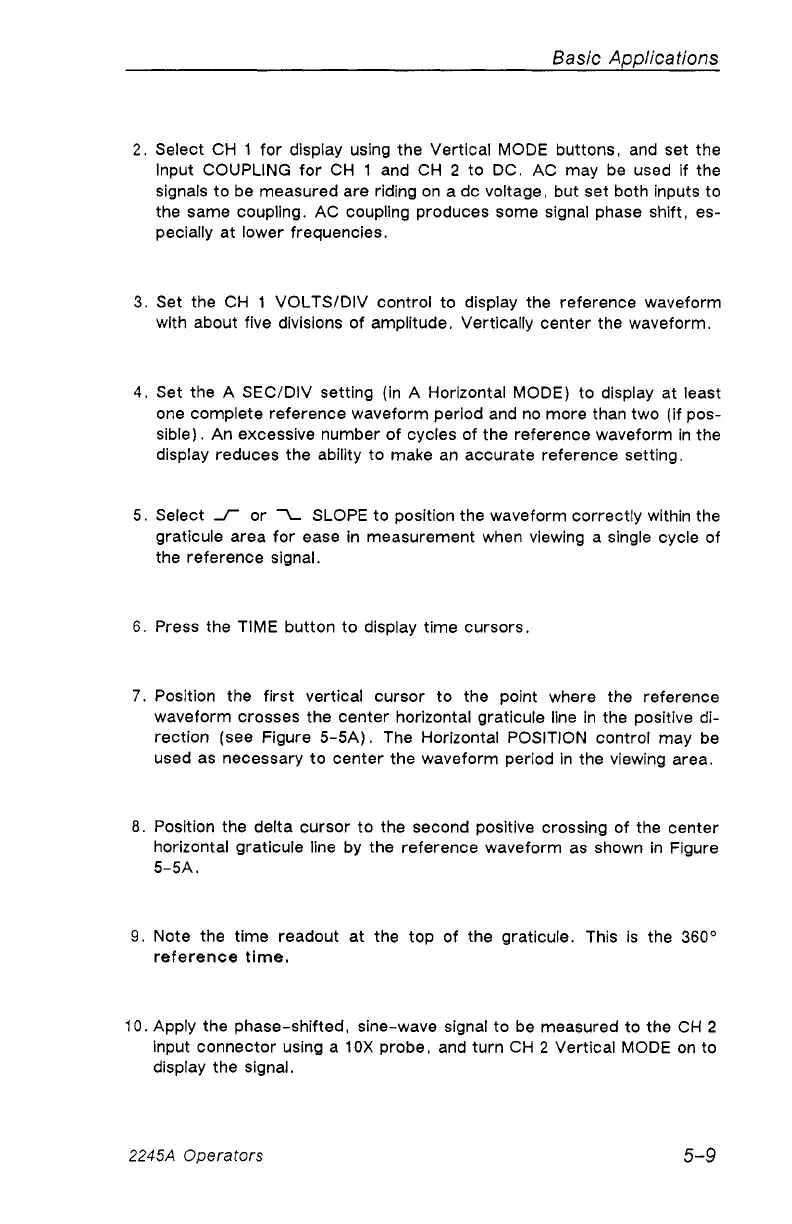Basic Applications
2. Select CH 1 for display using the Vertical MODE buttons, and set the
Input COUPLING for CH 1 and CH 2 to DC. AC may be used if the
signals to be measured are riding on a dc voltage, but set both inputs to
the same coupling. AC coupling produces some signal phase shift, es
pecially at lower frequencies.
3. Set the CH 1 VOLTS/DIV control to display the reference waveform
with about five divisions of amplitude. Vertically center the waveform.
4. Set the A SEC/DIV setting (in A Horizontal MODE) to display at least
one complete reference waveform period and no more than two (if pos
sible) . An excessive number of cycles of the reference waveform in the
display reduces the ability to make an accurate reference setting.
5. Select or SLOPE to position the waveform correctly within the
graticule area for ease in measurement when viewing a single cycle of
the reference signal.
6. Press the TIME button to display time cursors.
7. Position the first vertical cursor to the point where the reference
waveform crosses the center horizontal graticule line in the positive di
rection (see Figure 5-5A). The Horizontal POSITION control may be
used as necessary to center the waveform period in the viewing area.
8. Position the delta cursor to the second positive crossing of the center
horizontal graticule line by the reference waveform as shown in Figure
5-5A.
9. Note the time readout at the top of the graticule. This is the 360°
reference time.
10. Apply the phase-shifted, sine-wave signal to be measured to the CH 2
input connector using a 10X probe, and turn CH 2 Vertical MODE on to
display the signal.
2245A Operators
5-9

